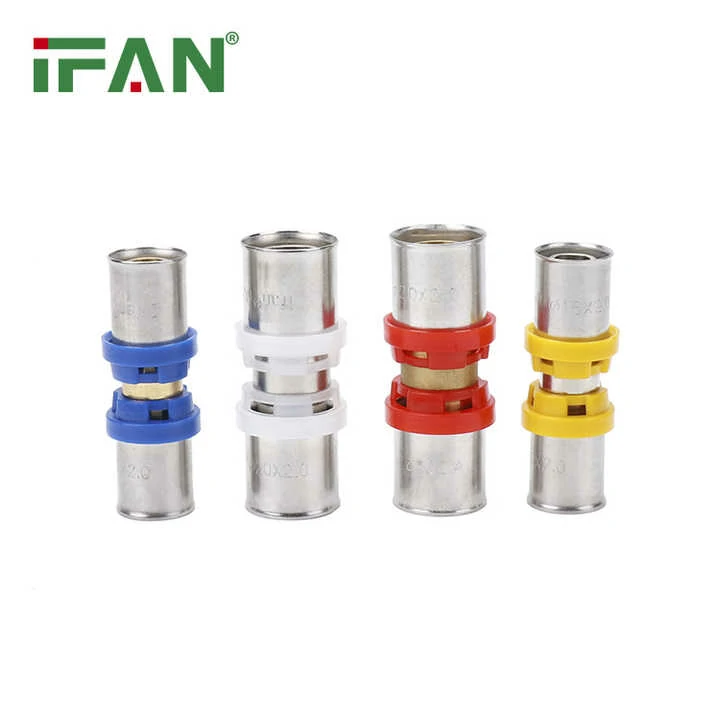Brass press fittings create a strong, leak-proof connection between pipes without soldering, threading, or glue. Here’s how they work:
1. Key Components
- Brass Press Fittings Brass Fitting Body – Contains built-in O-rings (gaskets) and a gripping mechanism (usually a stainless steel ring or teeth).
- Press Tool – A hydraulic or battery-powered tool that crimps the fitting onto the pipe.
2. Installation Process
Step 1: Cut & Deburr the Pipe
- Ensure the pipe end is clean, straight, and free of scratches/debris.
- Use a pipe cutter and deburring tool for a smooth edge.
Step 2: Insert the Pipe into the Fitting
- Push the pipe fully into the fitting until it bottoms out.
- A visual mark or depth gauge confirms proper insertion.
Step 3: Press the Connection
- Place the jaw of the press tool over the fitting’s press zone.
- Squeeze the tool to compress the fitting uniformly around the pipe.
- The press action:
- Compresses the O-ring (creating a watertight seal).
- Locks the stainless steel grip ring onto the pipe (prevents pull-out).
3. How the Seal Works
- O-Ring Seal – The compressed rubber gasket prevents leaks.
- Mechanical Grip – The stainless steel ring bites into the pipe, securing it permanently.
- Pressure Resistance – Properly pressed fittings can handle high pressure (up to 16 bar or more).
4. Advantages Over Traditional Methods
- No heat or open flame (unlike soldering).
- Faster than threading or gluing.
- More reliable than compression fittings (no risk of loosening over time).
5. Common Applications
- Plumbing (water supply, heating systems)
- HVAC & refrigeration
- Gas lines (with approved fittings)
- Industrial piping
View more:https://www.ifanfittings.com/


